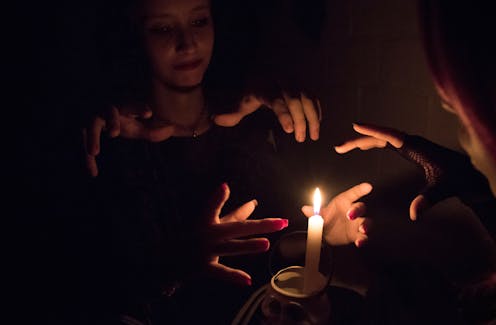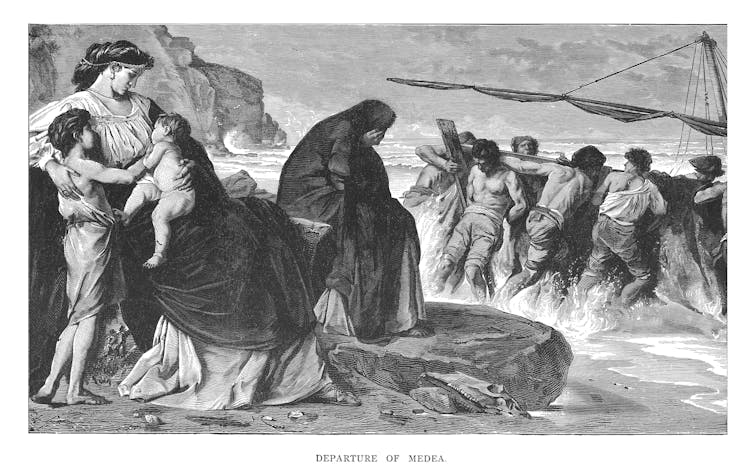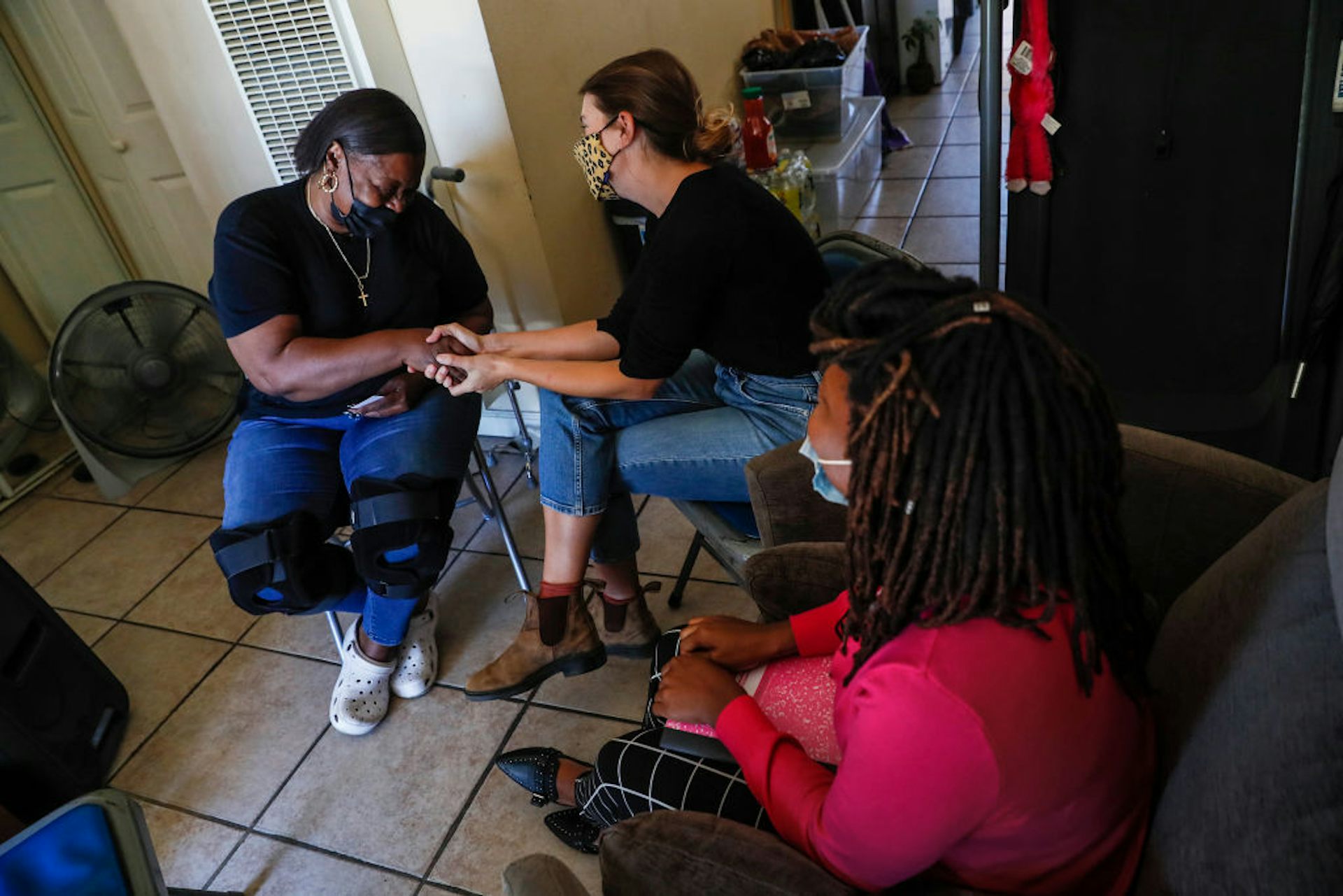What Greek myth tells us about modern witchcraft
From ancient Greece to modern-day TikTok witchcraft, the world of witches has been a changing one.

Living on the North Shore in Boston in the fall brings the gorgeous turning of the leaves and pumpkin patches. It is also a time for people to head to nearby Salem, Massachusetts, home of the 17th century infamous witch trials, and visit its popular museum.
Despite a troubled history, there are people today who consider themselves witches. Often, modern witches share their lore, craft and stories on TikTok and other social media platforms.
As a scholar who works on myth and poetry from ancient Greece – and as a native of New England – I have long been fascinated by the cultural conversations about witches. Witch trials in the Americas and Europe were in part about enforcing power structures and persecuting the weak. From ancient Greece through Puritan New England, witches functioned as easy targets for cultural anxieties about gender, power and mortality.
Ancient witches: gender and power
While modern witchcraft is inclusive of many different genders and identities, witches in ancient myth and literature were almost exclusively women. Their stories were in part about navigating gender roles and power in a patriarchal system.
Fear about women’s power was an essential part of ancient anxiety about witchcraft. This fear, moreover, relied on traditional expectations about the abilities innate to a person’s gender. As early as the creation narrative in Hesiod’s “Theogony” – a poem hailing from a poetic tradition between the eighth and fifth centuries B.C. – male gods like Cronus and Zeus were depicted with physical strength, while female figures were endowed with intelligence. In particular, women knew about the mysteries of childbirth and how to raise children.
In the basic framework of Greek myth, then, men were strong and women used intelligence and tricks to cope with their violence. This gendered difference in traits combined with ancient Greek views of bodies and aging. While women were seen to move through stages of life based on biology – childhood, adolescence via menstruation, childbearing and old age – the aging of men was connected to their relationship to women, particularly in getting married and having children.
Both Greek and Latin have a single word for man and husband – “aner” in Greek and “vir” in Latin. Socially and ritually, men were essentially seen as adolescents until they became husbands and fathers.
Female control over reproduction was symbolized as a kind of ability to control life and death. In ancient Greece, women were expected to bear all responsibilities during early child rearing. They also were the ones to exclusively take on special roles in mourning the dead. Suspicion, anxiety and fear about mortality were then put on to women in general.
Powerful women
This was true especially for women who did not fit into typical gendered roles like the virtuous bride, the good mother or the helpful old maid.
While ancient Greek does not have a word that directly translates as “witch,” it does have “pharmakis” (someone who gives out drugs or medicine), “aoidos” (singer, enchantress) and “graus” or “graia” (old woman). Of these names, graus is probably closest to later European stereotypes: the mysterious old woman who is not part of a traditional family structure.
Much like today, foreignness invited suspicion in the ancient world as well. Several of the characters who may qualify as mythical witches were women from distant lands. Medea, famous for killing her children when her husband, Jason, proposes marrying someone else in Euripides’ play, was a woman from the east, a foreigner who did not adhere to the expectations for a woman’s behavior in Greece.
She started her narrative as a princess who used concoctions and spells to help Jason. Her powers increased male virility and life.

Medea allegedly learned her magical craft from her aunt, Circe, who shows up in Homer’s “Odyssey.” She lived alone on an island, luring men to her cabin with seductive food and drink to turn them into animals. Odysseus defeated her with an antidote provided by the god Hermes. Once her magic failed, Circe believed she had no choice but to submit to Odysseus.
Witches over time
Elsewhere in the “Odyssey” there are similar themes: the Sirens who sing to Odysseus are enchantresses who try to take control of the hero. Earlier in the epic, the audience witnesses Helen, whose departure with the Trojan prince Paris was the cause of the Trojan War, add an Egyptian drug called nepenthe to the wine she gives to her husband, Menelaos, and Odysseus’ son, Telemachus. This wine was so strong, it made people forget about the pain of losing even a loved one.
In each of these cases, women who practice magic threaten to exert control over men with tools that can also be part of a pleasurable life: songs, sex and families. Other myths of monstrous women reinforce how misogynistic stereotypes animate these beliefs. The ancient figure Lamia, for example, was a once beautiful woman who stole and killed infants because her children had died.
Empousa was a vampiric creature who fed on the sex and blood of young men. Even Medusa, well-known as the snake-haired Gorgon who turned men to stone, was reported in some sources to have actually been a woman so beautiful that Perseus cut her head off to show it off to his friends.
These examples are from myth. There were many living traditions of women’s healing and song cultures that have been lost over time. Many academic authors have traced the modern practices of witchcraft to ancient cults and the survival of pagan traditions outside of mainstream Christianity. Recent studies of ancient magical practices show how widespread and varied they were.
While ancient women were likely subject to suspicion and slander for witchcraft, there is no evidence that they faced the kind of widespread persecution of witches that swept Europe and the Americas a few centuries ago. The later 20th century, however, saw renewed interest in witchcraft, often in concert with movements empowering women.
Modern witches are crossing international borders and learning from each other without leaving their homes by creating communities on social media, like TikTok. If fear about women’s power led to paranoia in the past, exploring and embracing witchcraft has become part of reclaiming women’s histories.
Joel Christensen does not work for, consult, own shares in or receive funding from any company or organization that would benefit from this article, and has disclosed no relevant affiliations beyond their academic appointment.
Read These Next
George Washington’s foreign policy was built on respect for other nations and patient consideration
For the nation’s first president, friendliness was strategy, not concession: the republic would treat…
Live healthier in 2026 by breathing cleaner air at home
An atmospheric chemist offers quick, easy and inexpensive suggestions to reduce indoor air pollution.
The 17th-century Pueblo leader who fought for independence from colonial rule – long before the Amer
Po'pay, a Tewa religious leader, led the Pueblo Revolt, the most successful Indigenous rebellion in…






